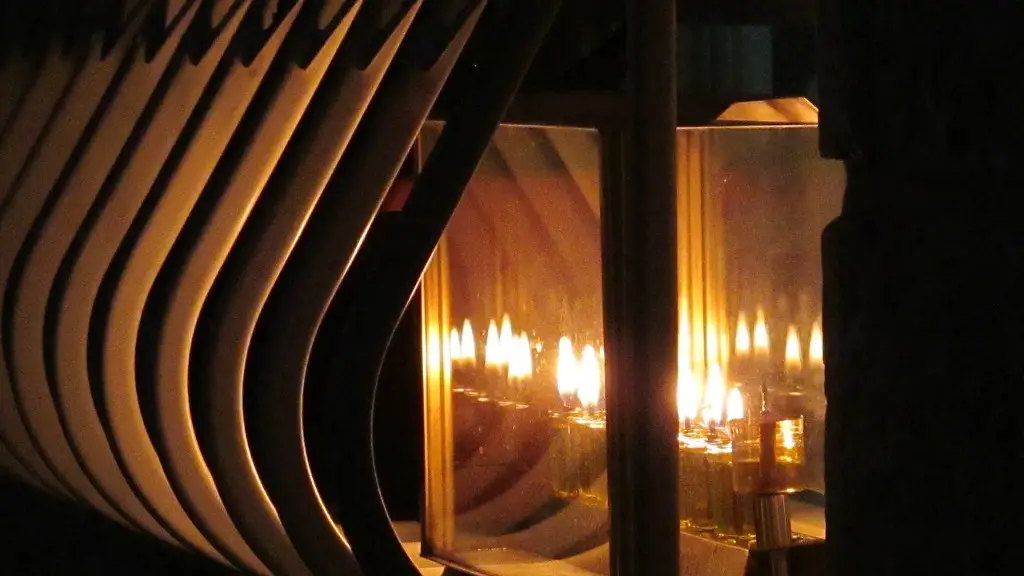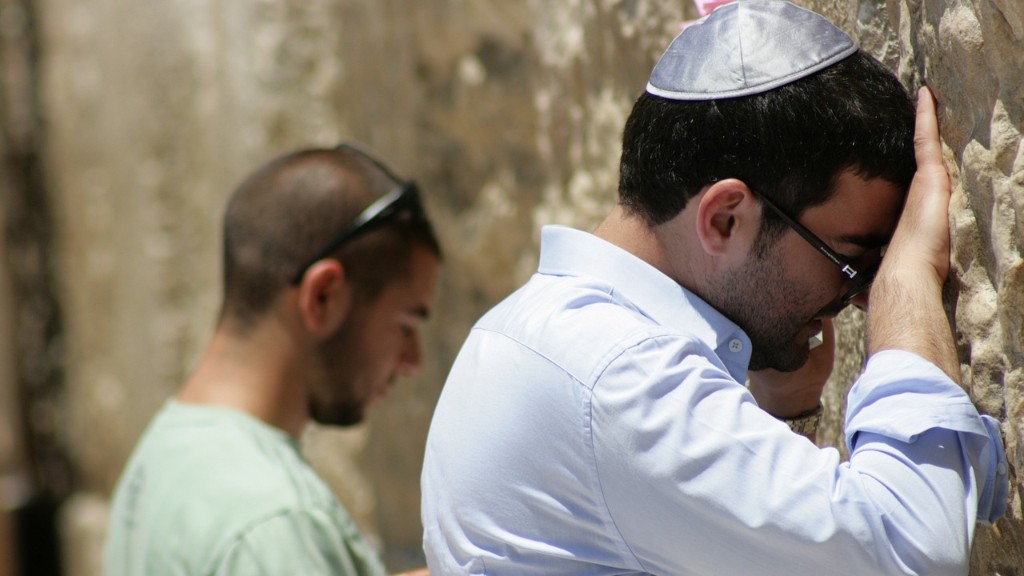Why Is Blue Associated With Judaism
The association between the color blue and Judaism is a long-standing one, stretching back over two thousand years. In fact, blue is commonly seen as the color that best represents the faith, and can be found in many rituals and symbols associated with Judaism.
The first documented examples of blue being associated with Judaism are found in the Bible. For example, in Numbers 15:38-40, God instructs the Israelites to wear on their garments “a blue cord.” This blue cord is believed to symbolize the connection between the people and God, and thus blue was adopted as a sacred color.
The association between blue and Judaism is also seen in the tallit, a prayer shawl that is worn by many during their prayers. It is adorned with strings of blue in remembrance of the blue cord that was once worn. Additionally, many people hang a blue thread in their home as a symbol of their faith and connection to God.
To this day, the color blue is still used in various ways within the Jewish faith. For example, blue is often used to decorate the entrances of synagogues and to symbolize the color of the sky, a reminder of sky’s connection to the divine. As well, blue is often used as the main color in embroidered Torah scrolls.
In some branches of Judaism, it is also customary for men to wear a symbol of blue called tekhelet on their tzitzit, commonly referred to as a “tallit katan” or a “ritual fringed garment.” This symbolizes one’s connection to God and adherence to the law. It is believed to be a reminder of the “blue cord” found in the Book of Numbers.
In addition to the many symbols associated with blue within the faith, it is also widely believed that the blue symbolizes many positive characteristics. For example, it is often seen as a sign of purity and strength, and is thus seen as a reminder of one’s commitment to God and to their faith. Blue is also seen as a color that can represent protection, faithfulness, and peace.
Blue in Jewish Art
Blue is also a common color in Jewish art and textiles. It can be seen in the star of David, which has been associated with Judaism for centuries and has become a universal symbol of the faith. In contemporary times, blue is often used to symbolize the Jewish people in family events such as weddings and bar mitzvahs. It can also be seen in the intricate traditional embroidery and other artwork, which incorporate symbols and images from the Bible and other ancient texts.
The prominence of blue in art and textiles is also reflected in the modern synagogue. It is common for synagogues to be adorned with blue textile pieces, to symbolize the connection between the people and God, and to evoke a sense of peace.
Moreover, blue is one of the primary colors used in the Israeli flag, which could be seen as an expression of national belonging and identity. It is also seen in the Jewish star known as the Magen David, which is an important symbol of the faith and is often seen as a sign of protection and unity.
Overall, blue is indelibly linked to the Jewish faith. It is seen as a sign of strength, faithfulness and connection to God, as well as an indicator of national identity and solidarity. As a result, blue is a powerful and meaningful color for many Jews and an important part of their faith.
New Developments Of Blue In Jewish Symbology
In recent years, the use of blue has been expanded to create new symbols and icons within the Jewish faith. One such example is the blue and white striped Israeli flag, which serves as a strong symbol of national and religious identity. Additionally, blue is often used in modern Jewish liturgy, as in the popular blue and white Siddur, or prayer book.
In addition to more traditional symbols like the prayer shawl and the star of David, blue has also been used in more contemporary ways, to express contemporary Jewish identity. For example, the “I am Israel” pin – a blue and silver pin in the shape of Israel – has recently become popular among the Jewish community.
Notably, the Lev Tahor movement, a sect of Orthodox Jewish followers, has adopted blue as their official color. Members of the movement wear blue clothing and are known for their blue-striped hats and prayer shawls. This has laid the foundation for a new interpretation of the traditional blue symbolism in Judaism.
Blue has also become popular in fashion, as blue items have become increasingly associated with the Jewish faith. For example, the blue and white kippot, or skullcaps, have become a strong symbol of Jewish identity, and the clothing company, We the Free, has released a clothing line featuring the blue and white Israeli flag.
Blue In Jewish Tunes
The association between blue and Judaism is also seen in music, as many Jewish folk songs tell stories of the blue cord, that is, the connection between God and the people. The symbolism is also seen in the lyrics of popular Israeli music, which often speaks of blue skies and blue horizons, both of which are often seen as metaphors for the spiritual connection between man and the divine.
Additionally, blue is often used as a symbol of grief and remembrance for those who have been lost, as seen in popular songs such as “The Blue and White,” which speaks of the pain of parting with loved ones. Furthermore, blue is often used as a way to express longing for a homeland and lost loves.
Blue As A Symbol For Hope
Finally, blue is seen as a symbol of hope, resilience, and strength. It is seen as a reminder of the strength and faith of the Jewish people, and a reminder of the collective identity and spirit that binds them together. As such, it is often associated with feelings of hope and optimism.
For example, the popular Israeli song “Blue and White,” speaks of the blue of the sky, which is seen as a reminder to never give up hope. Similarly, the blue of the Israeli flag is seen as a sign of resilience, courage, and hope, even in the face of adversity.
Blue as A Source Of Comfort
Moreover, blue has also become a powerful source of comfort for many in the Jewish community. For example, the traditional blue prayer shawl and the blue cord is often seen as a reminder of God’s protection and guidance, and a source of comfort during difficult times.
In addition, the blue of the Israeli flag is seen as a reminder of the Jewish homeland, and serves as a source of hope for many who are longing for a return. Furthermore, the blue of the star of David is seen as a symbol of solidarity and pride, as it stands as a reminder of the shared struggle of the Jewish people.
Conclusion
In conclusion, the association between blue and Judaism is an ancient one, and one that has been reinforced throughout history. It is seen as a sign of strength, faithfulness, and connection to God, as well as national identity and solidarity. Furthermore, it has taken on a new meaning in the age of the internet, and has become a powerful source of comfort, hope, and pride in the Jewish community. It is a powerful symbol that is steeped in history and faith, and one that has been embraced by many within the Jewish faith around the world.

